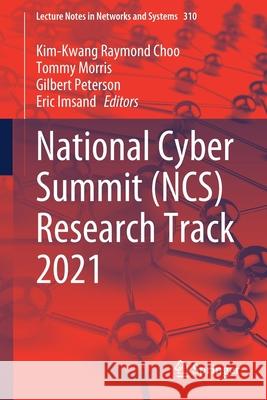National Cyber Summit (Ncs) Research Track 2021 » książka
topmenu
National Cyber Summit (Ncs) Research Track 2021
ISBN-13: 9783030846138 / Angielski / Miękka / 2021 / 175 str.
Kategorie:
Kategorie BISAC:
Wydawca:
Springer
Seria wydawnicza:
Język:
Angielski
ISBN-13:
9783030846138
Rok wydania:
2021
Wydanie:
2022
Numer serii:
000797696
Ilość stron:
175
Waga:
0.27 kg
Wymiary:
23.39 x 15.6 x 1.02
Oprawa:
Miękka
Wolumenów:
01
Dodatkowe informacje:
Wydanie ilustrowane











